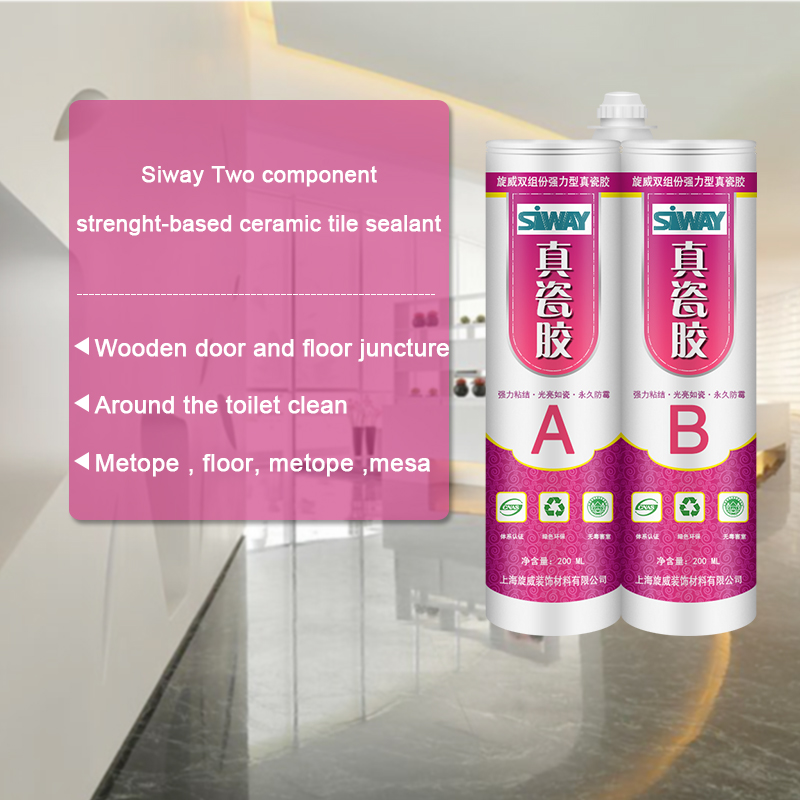Factory best selling SV-8890 Two-component Silicone Structural Glazing Sealant for Vietnam Importers
Short Description:
Description SV8890 is neutral curing, designed for glass, stone, marble, granite, aluminum curtain wall and glass daylighting roof and metal structural engineering structural adhesive seal designed silicone sealant structure, excellent bonding performance of structure and the weathering resistance, after artificial accelerated weathering test, various physical and chemical properties have no obvious change in the sealant. When using, SV8890 with dedicated two-component glue machine constructi...
Sticking to the principle of "Super Quality, Satisfactory service" ,We are striving to be a good business partner of you for Factory best selling SV-8890 Two-component Silicone Structural Glazing Sealant for Vietnam Importers, To learn more about what we can do for you, contact us at any time. We look forward to establishing good and long-term business relationships with you.
Description
SV8890 is neutral curing, designed for glass, stone, marble, granite, aluminum curtain wall and glass daylighting roof and metal structural engineering structural adhesive seal designed silicone sealant structure, excellent bonding performance of structure and the weathering resistance, after artificial accelerated weathering test, various physical and chemical properties have no obvious change in the sealant. When using, SV8890 with dedicated two-component glue machine construction, two kinds of components in accordance with the provisions, mixing ratio after curing form elastomer.
Key Features
1. None sag
2. Adjustable working time
3. Excellent adhesion to most building substrates
4. High bonding strength and modulus
5.12.5%movement capability
6. Silicone durability
Basic Application
1.Glass, stone, marble, granite, aluminum curtain wall and glass daylighting roof and metal structural engineering structural adhesive seal;
2.Insulating Glass of the second seal
3.Many other building and industrial applications
Technical data sheet
| Test project | Unit | value |
| Flow, sagging or vertical flow | mm | 0 |
| Operating time | min | 20 |
| surface drying time(25℃,50%R.H.) | min | 40-60 |
| Durometer Hardness | Shore A | 20-60 |
| At 23 ℃ maximum tensile strength elongation | % | ≥100 |
| Tensile strength(23℃) | Mpa | 0.9 |
| Tensile strength(90℃) | Mpa | 0.68 |
| Tensile strength(-30℃) | Mpa | 0.68 |
| Tensile strength(flooding) | Mpa | 0.68 |
| Tensile strength(flooding – ultraviolet) | Mpa | 0.68 |
| Bond damage area | % | 5 |
| Thermal aging(thermal weight loss) | % | ≤5 |
| Thermal aging(crack) | No | |
| Thermal aging(efflorescence) | No |
Certification
GB 16776
Color
Component A(Base) – White, Component B(Catalyst)- Black
Package
1. Component A(Base): (190L), Component B(Catalyst) (18.5L)
2. Component A(Base):24.5kg (18L), Component B(Catalyst): 1.9kg (1.8L)
Shelf life
12 months
Note
If you want the TDS or MSDS or other details, please contact with our sales person.
Turn fire into conductive ink and paint, then build electronic circuits, paper musical instruments and inputs for your Arduino boards!
Today you will learn how to make your own conductive ink to draw electronic circuits using the leftovers from your fireplace or BBQ! You can use this ink to draw circuits on paper and cardboard, learn about electronic circuits or play around with arduino boards like the Makey Makey to create paper musical instruments like pianos, digital drumsets, guitars, etc.
Conductive Ink is a great way to learn the basics of electronics. This a recipe that is non-toxic and extremely low cost. Comercial conductive inks cost around $10 to $15 for a small pen that may not last for much, specially if you want to draw large shapes or cover large surface areas.
This paint will just cost you cents to make using charcoil left from your fireplace or BBQ, a bit of black water paint and a bit of Elmer’s glue! That’s it!! The principle is that carbon dust is conductive so once you blend the charcoil from your fireplace and mix it with a bit of paint and glue you will have a paint that becomes conductive together with the carbon dust!
Now this is not as conductive as commercially available paints that use silver particles or industrial purified carbon, but it will be very useful to conduct very small currents, to turn on an LED or as inputs for Arduino boards. Please experiment with this and let’s find out how to make this paint much more conductive with other ready available, cheap materials. Please email us at info@makerboat.com or visit us at https://www.makerboat.com if you have any suggestions. Let’s create a Creative Commons, Open Source Conductive Paint!
This video shows the patch used in my other video – https://www.youtube.com/watch?v=tPWD8ofOP7k


